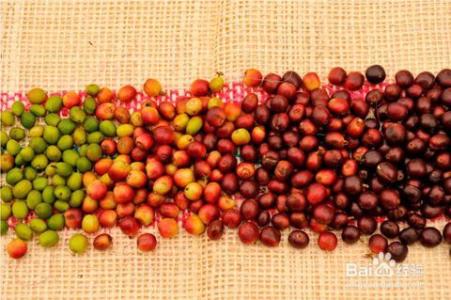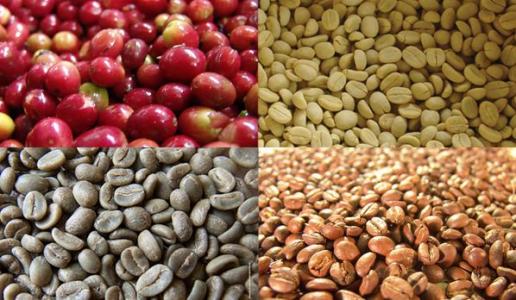Flavor description of Ethiopian Yejia Coffee Coffee the characteristics of varieties produced by taste treatment
Flavor description of Ethiopian Yejia Coffee Coffee the characteristics of varieties produced by taste treatment
Ethiopia is an important coffee producer with about 12 million people engaged in coffee production and is a major exporter of Arab coffee beans in Africa. The high-quality coffee here is of excellent quality and is worth looking for.
Various forms of coffee cultivation can be found in Ethiopia: everything from wild coffee forests and semi-developed land to traditionally operated plots to modern plantations. About 50% of the coffee is grown more than 1500 meters above sea level.
Harrar coffee is the highest growing area of all coffee in Ethiopia. Hara coffee can be divided into long coffee beans and short coffee beans, of which long coffee beans are the most popular. It has a soft taste, with wild flavor of wine, and slightly sour taste, unforgettable after drinking. Djimmah coffee is wild at an altitude of more than 1200 meters, Lima coffee (Limu) and Babeka coffee
Sidamo: 1400 to 2200 meters above sea level, it is a famous boutique coffee area in southern Egypt, bordering Kenya, with two kinds of washing and sun exposure. The washed sidamole is light green and the beans are small and oval. The palate has citrus aromas with a hint of raspberries, as well as pleasant elegant sweet and sour flavors, sweet grapes and a chocolate finish. Sun Sidamo's bean color is yellowish green, the bean phase is not neat, and it is common to lack carob beans. Properly handled sun Sidamo flavor is not discounted, in addition to the citrus flavor of washed beans, there is a strong fruit aroma. This is related to the fact that coffee beans are dried in the pulp and fermented for up to two weeks. This flavor is not commonly found in washed beans. However, once the sun is not handled properly, it is easy to have a fishy smell and lose all its elegant aroma. Sun beans are not top grade if they don't have a strong fruit flavor.
Readers interested in Ethiopian boutique beans should pay more attention to the producing areas of Sidamo, Yegashifi (especially rare sun-dried beans), Harald, Lim and Jinbi, whose rich orange and floral aromas are different from those of Central and South American beans. Ethiopia is a treasure trove of coffee genes, and experts estimate that there may be more than 2,000 Arabica subspecies hidden in the country, but the biggest dilemma facing the coffee industry in Ethiopia is that the output is too low. This is related to small-scale farming and organic cultivation, with an average yield of about 800,1200 kilograms per hectare, which is much lower than that in Central and South America (Costa Rica produces an average of two tons of coffee beans per hectare), which shows that Egypt still has a long way to go to increase production. In addition, Egypt's natural low-caffeine coffee trees are being planted, and natural low-caffeine beans will be on the market as soon as two ○○ in nine years.

Important Notice :
前街咖啡 FrontStreet Coffee has moved to new addredd:
FrontStreet Coffee Address: 315,Donghua East Road,GuangZhou
Tel:020 38364473
- Prev

Flavor description of Yejia Fischer Coffee Regional Grinding scale by Taste treatment
The flavor description of Yega Ficher Coffee Coffee the coffee trees of Yegashefi were planted by European monks (a bit like Belgian monks growing wheat to brew beer) and later transferred to farmers or co-operatives. Yega Xuefei is actually constructed by surrounding coffee communities or cooperatives, including Edido Idid near Fog Valley Misty valley.
- Next

Which brand of Indonesian Mantenin coffee has a good taste and price characteristics to deal with the introduction of legal production areas
Indonesia mandheling Coffee which brand has a good taste and price characteristics to deal with the legal production area the well-known Mantenin Coffee is produced all over Lake Toba in northern Sumatra. The finished product has a unique fragrance of herbs and trees. Gold Manning, the Japanese adopted more stringent quality control more than a decade ago. After picking beans manually for four times and eliminating defective beans, the Japanese produced dark green color and uniform bean appearance.
Related
- Detailed explanation of Jadeite planting Land in Panamanian Jadeite Manor introduction to the grading system of Jadeite competitive bidding, Red bid, Green bid and Rose Summer
- Story of Coffee planting in Brenka region of Costa Rica Stonehenge Manor anaerobic heavy honey treatment of flavor mouth
- What's on the barrel of Blue Mountain Coffee beans?
- Can American coffee also pull flowers? How to use hot American style to pull out a good-looking pattern?
- Can you make a cold extract with coffee beans? What is the right proportion for cold-extracted coffee formula?
- Indonesian PWN Gold Mandrine Coffee Origin Features Flavor How to Chong? Mandolin coffee is American.
- A brief introduction to the flavor characteristics of Brazilian yellow bourbon coffee beans
- What is the effect of different water quality on the flavor of cold-extracted coffee? What kind of water is best for brewing coffee?
- Why do you think of Rose Summer whenever you mention Panamanian coffee?
- Introduction to the characteristics of authentic blue mountain coffee bean producing areas? What is the CIB Coffee Authority in Jamaica?

